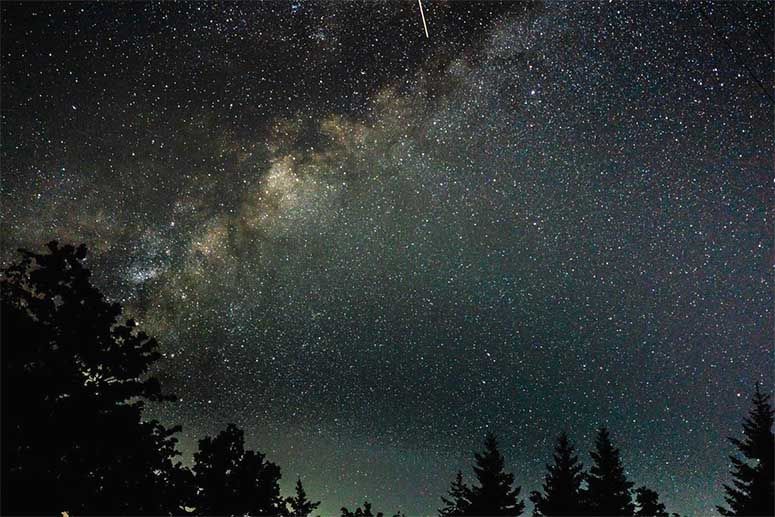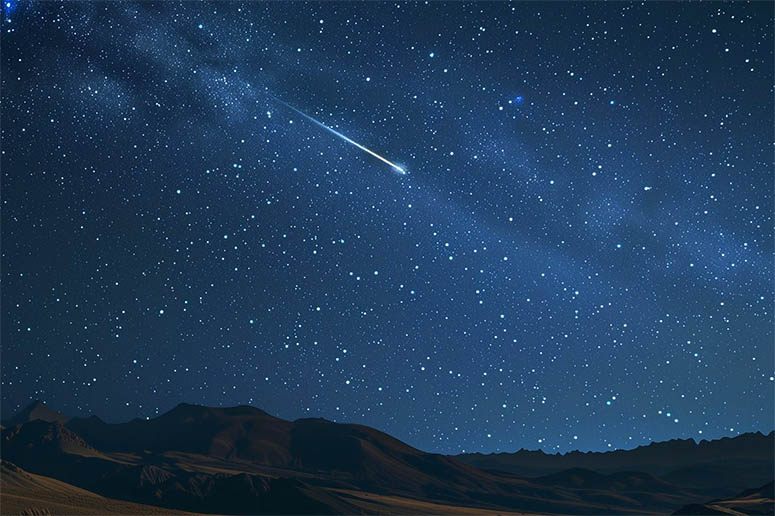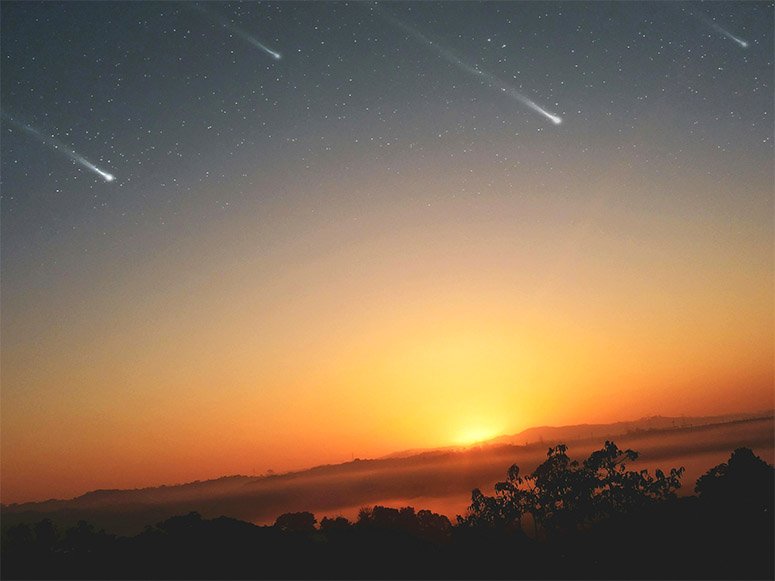Contents
Have you ever found yourself observing a starlit sky, hoping to witness the fleeting appearance of a shooting star?
These remarkable celestial events not only captivate our imagination but also ignite curiosity regarding their nature and occurrences.
What are the odds of seeing a shooting star, and how can you increase your chances?This article examines the true nature of shooting stars, their causes, and the distinctions between shooting stars and meteors.
Additionally, it provides information on when and where to observe them, the best viewing conditions, and strategies to enhance the likelihood of witnessing these spectacular phenomena. Prepare to explore the mysteries of shooting stars.
What is a shooting star?
A shooting star, frequently misidentified as a star, is, in fact, a meteoroid entering the Earth’s atmosphere at significant velocities.
This phenomenon produces a luminous streak of light that captivates observers during various celestial events, particularly during meteor showers such as the Perseids and Geminids.
These transient flashes in the night sky have inspired human imagination for centuries, often linked to the granting of wishes and various folklore. As a result, they are highly sought after by both astronomy enthusiasts and casual stargazers.
What causes shooting stars?
Shooting stars, scientifically known as meteors, are the result of meteoroids – small fragments of cosmic dust or debris originating from comets and asteroids – entering Earth’s atmosphere at extraordinary velocities, often surpassing the speed of sound.
This high-speed interaction generates a brilliant flash of light and can occasionally lead to fragmentation as the meteoroids disintegrate during their atmospheric passage.
This phenomenon represents a captivating intersection of astrophysics and celestial mechanics.
What is the difference between a shooting star and a meteor?
The terms ‘shooting star’ and ‘meteor’ are frequently used interchangeably – however, it is important to note that a shooting star refers specifically to the visible streak of light produced when a meteoroid burns upon entering Earth’s atmosphere.
In contrast, the term meteor encompasses the entire process, including the object itself, thereby providing clarity within the context of celestial phenomena.
Understanding these distinctions is crucial, particularly for individuals with an interest in astronomy.
A meteoroid is defined as a small rock or particle traveling through space, and it is only upon encountering the Earth’s atmosphere that this object generates the bright flash commonly referred to as a shooting star.
This distinction emphasizes the transformation that occurs during the meteor’s journey, from a solid object to a luminous phenomenon.
It is often believed that the sighting of a shooting star guarantees the fulfillment of a wish – however, this mesmerizing display is merely a fleeting moment of cosmic interaction.
Comprehending these definitions facilitates a deeper appreciation of the wonders of our universe.
How often do shooting stars occur?

The frequency of shooting stars is affected by multiple factors, including the time of year and specific meteor showers, such as the Perseids and Geminids.
These meteor showers occur annually and offer optimal viewing conditions for enthusiasts seeking to observe these celestial events in accordance with a celestial calendar.
What is the best time of year to see shooting stars?
The optimal times of year to observe shooting stars typically coincide with major meteor showers, such as the Perseids in August and the Geminids in December.
During these events, stargazers can witness a significant increase in meteoric activity, making them prime opportunities for nighttime observation and the fulfillment of celestial wishes.
These impressive displays present an opportunity to appreciate nature’s fireworks, with conditions reaching their peak during specific periods when Earth passes through streams of debris left by comets.
For example, the Perseids, renowned for their bright and swift meteors, typically peak around mid-August, attracting numerous enthusiasts.
In contrast, the Geminids peak in December, offering another favorable window for sightings during the cooler winter nights, when the sky is often clearer.
Understanding these patterns not only enhances the stargazing experience but also deepens one’s appreciation for the dynamic nature of our universe.
What is the best time of night to see shooting stars?
The optimal time for observing shooting stars is generally between midnight and dawn, when the sky is at its darkest and visibility conditions are most favorable.
This period allows stargazers to have a greater likelihood of witnessing these luminous celestial phenomena without the interference of light pollution.
During these early hours, the absence of sunlight enhances the depth of the night sky, facilitating the observation of the fleeting trails of meteors.
Atmospheric conditions also play a critical role in this experience – clear nights with minimal cloud cover significantly increase the chances of witnessing these spectacular displays.
It is essential to select observation locations that are far removed from urban areas, as artificial lighting can severely hinder visibility.
By considering these factors, observers can optimize their chances of experiencing the wonder and beauty of shooting stars as they elegantly traverse the sky.
What is the best location to see shooting stars?
To maximize the likelihood of observing shooting stars, it is essential to select a location characterized by dark skies, free from the interference of urban light pollution.
National parks or remote areas serve as ideal settings for optimal celestial observation and provide a breathtaking view of the night sky.
These locations not only minimize artificial light interference but also offer expansive horizons that enhance visibility. By venturing into areas renowned for their pristine darkness, individuals can fully immerse themselves in the awe-inspiring spectacle of meteor showers.
Elevated terrains, such as mountains or coastal cliffs, can further enhance the experience, as they typically rise above the surrounding light pollution.
Timing is also a critical factor – therefore, identifying moon phases and meteor shower calendars can assist skywatchers in effectively planning their outings, ensuring that they witness as many shooting stars as possible in these tranquil environments.
What are the best conditions for seeing shooting stars?
The optimal conditions for observing shooting stars entail a clear sky, minimal cloud cover, and low levels of light pollution. These factors significantly enhance visibility and contribute to a more enjoyable stargazing experience during meteor showers and other celestial events.
What is the best weather for seeing shooting stars?
The optimal weather conditions for observing shooting stars are characterized by clear skies with minimal cloud cover. Overcast conditions can obstruct the night sky, thereby hindering visibility and making it challenging for observers to witness the streaks of light produced during meteor showers.
Plus cloud cover, humidity and atmospheric pollution significantly influence the overall experience of meteor observation. Elevated humidity levels can result in denser air, which scatters light and diminishes clarity.
Meanwhile, light pollution from urban environments generates a glow that obscures the beauty of these transient celestial events. Conversely, crisp, dry nights tend to offer the most favorable viewing conditions.
During such times, meteors appear more vividly against the dark expanse of the sky, enhancing the experience for those seeking to witness nature’s remarkable light display.
What is the best light pollution level for seeing shooting stars?
The optimal light pollution level for observing shooting stars is found in areas designated as dark sky locations, where artificial lighting is minimized. Such environments significantly enhance visibility, enabling stargazers to fully appreciate the beauty of meteor showers without interruption.
In these tranquil settings, the breathtaking interplay between celestial phenomena and the night sky becomes strikingly evident. When light pollution is adequately controlled, the vibrant trails of meteors, commonly referred to as shooting stars, can be distinctly observed.
This transition from faint streaks to brilliant bursts captivates those fortunate enough to witness them. Observers often find that the serenity of a dark sky location enriches their overall stargazing experience, fostering a deeper connection with the universe.
For individuals keen to admire nature’s light displays, seeking out these unpolluted skies is essential for an unforgettable evening under the stars.
What are the odds of seeing a shooting star?

The likelihood of observing a shooting star can vary considerably based on several factors, including the time of year, the frequency of meteor showers, and the observer’s geographical location.
Optimal conditions enhance the probability of witnessing these celestial phenomena, particularly during peak meteor shower events.
What factors affect the odds of seeing a shooting star?
Several factors influence the likelihood of observing a shooting star, including the time of year, the intensity of meteor showers, atmospheric conditions, and the observer’s location.
A comprehensive understanding of these elements can substantially enhance one’s chances of witnessing these captivating cosmic events.
Firstly, planning stargazing excursions around peak meteor shower dates can lead to a more rewarding experience, as these occurrences typically result in a greater number of visible shooting stars.
Additionally, it is essential to seek out locations with minimal light pollution, since urban lighting can obstruct visibility. Dark, open spaces situated away from metropolitan areas are ideal for optimal viewing conditions.
Weather also plays a critical role in this endeavor – clear nights with minimal cloud cover significantly increase the probability of spotting these ephemeral celestial wonders.
By adjusting their stargazing strategies to emphasize these key factors, enthusiasts can markedly improve their chances of experiencing the beauty of shooting stars in the night sky.
How can i increase my chances of seeing a shooting star?
To enhance the likelihood of observing a shooting star, it is advisable to employ strategic viewing techniques. This includes selecting optimal dates during meteor showers, locating dark sky areas, and ensuring clear weather conditions.
These measures will maximize visibility and improve the overall experience of night observation.
What are some tips for spotting shooting stars?
Effective strategies for identifying shooting stars include utilizing a star map to pinpoint radiant points, selecting a comfortable viewing position, and allowing one’s eyes to adapt to the darkness. This practice enhances overall visibility and appreciation of the celestial display.
Plus these foundational practices, it is advisable for stargazers to time their observations during meteor showers, as these events significantly increase the likelihood of witnessing shooting stars.
Choosing a location that is free from city lights is crucial, as light pollution can impede visibility, making it challenging to observe these fleeting celestial phenomena.
Additionally, setting up a reclining chair or blanket can contribute to a more pleasurable experience, enabling the observer to remain relaxed without straining to view the sky.
Lastly, patience is paramount – the most rewarding viewing moments often require tranquility and stillness while waiting for those brilliant flashes to traverse the night sky.
What are some common misconceptions about seeing shooting stars?
Common misconceptions regarding shooting stars frequently include the belief that they are actual stars descending from the sky or that their visibility is solely a matter of luck. Such inaccuracies can undermine a comprehensive scientific understanding of these intriguing celestial phenomena.
In reality, shooting stars are not stars – they are meteoroids – small fragments of space debris that ignite upon entering the Earth’s atmosphere at high velocities.
This rapid descent leads to combustion and the emission of light, resulting in the bright streaks commonly observed in the night sky.
While many individuals may wish upon these transient flashes of light, the occurrence of meteors is primarily related to the Earth’s orbit intersecting with streams of debris, rather than being a matter of chance. Recognizing this distinction not only enhances one’s appreciation for the universe but also fosters a more informed perspective on the marvels of astrophysics.
To learn more about the chances of seeing a shooting star, visit our FAQ section below.
Discover the captivating world of probabilities and remarkable events. Feed your curiosity with our engaging articles at WhatAreTheOddsOf.NET.



